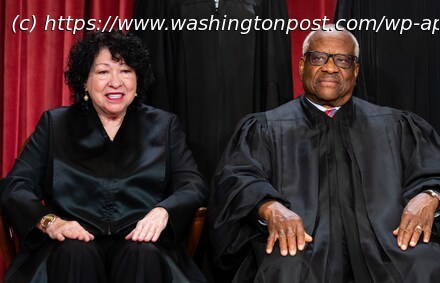The Supreme Court’s second Black and first Latina justices delivered rare public statements in the courtroom, offering starkly different views on affirmative action.
Just six years apart in age, Supreme Court Justices Sonia Sotomayor and Clarence Thomas each experienced racism and poverty in childhood: Sotomayor in public housing in the Bronx and Thomas in an impoverished Black community in coastal Georgia.
They sat side by side — the court’s first Latina justice and second African American justice — behind the raised mahogany bench on Thursday, offering passionately conflicting views on the decision rejecting race-conscious programs in college admissions.
Both Thomas and Sotomayor benefited from affirmative action, winning coveted spots in the same elite law school. But the two justices drew completely different lessons from their experiences.
“Treating anyone differently based on skin color is oppression,” Thomas, 75, said from the bench after Chief Justice John G. Roberts Jr. finished reading a summary of the landmark opinion. It was the first time in three decades on the court that Thomas felt so strongly about an issue he was compelled to share his concurring views in the courtroom.
Sotomayor, 69, felt strongly too. “Ignoring racial inequality,” she said, “will not make it disappear.”
Thomas has written that, after graduating from Yale Law School, he felt racial preference had “robbed my achievement of its true value.” In contrast, Sotomayor has called herself the “perfect affirmative action child” and said the practice opened doors for her at Princeton and Yale, where she excelled alongside her more privileged peers.
Their polite yet pointed exchange on Thursday stretched for more than 30 minutes, touching on the Constitution and historical and present-day racism.
Домой
United States
USA — mix For Thomas and Sotomayor, affirmative action ruling is deeply personal






